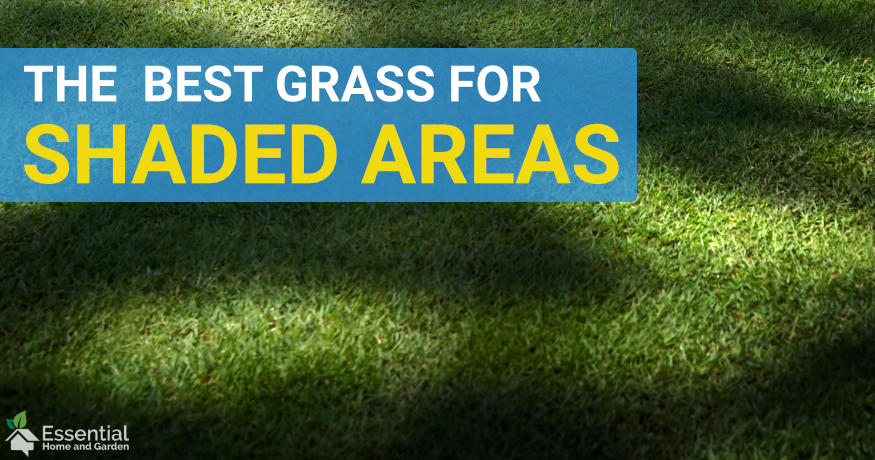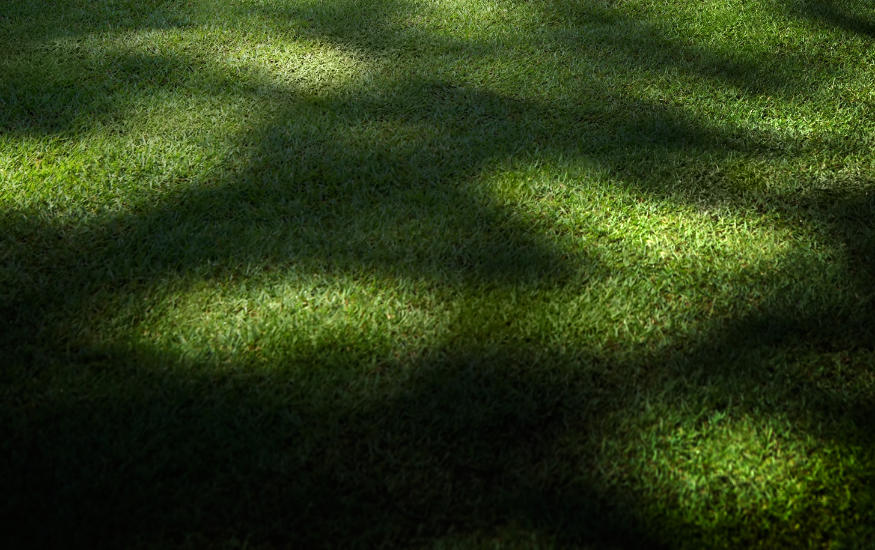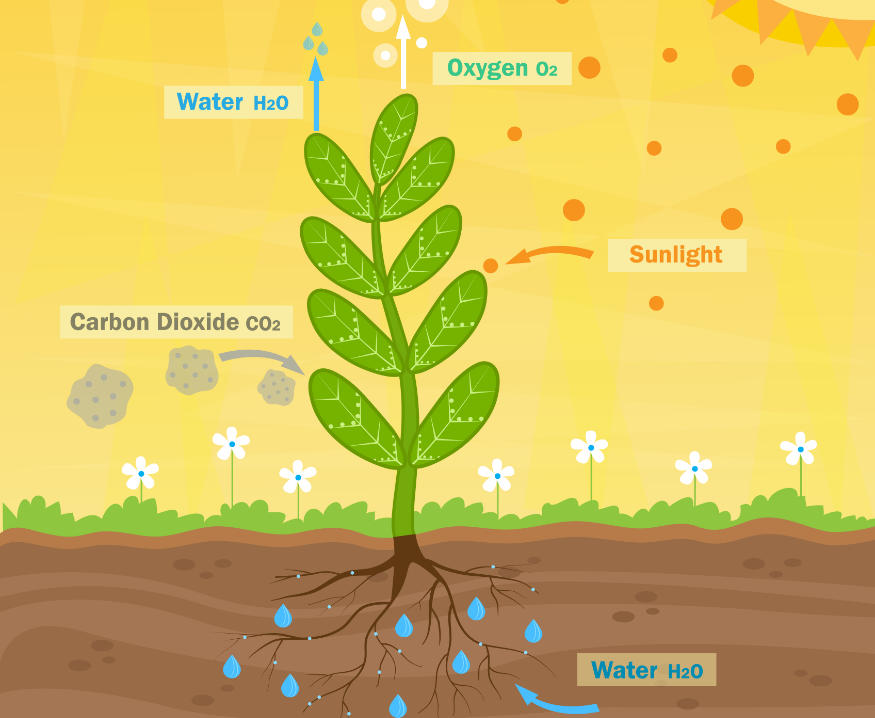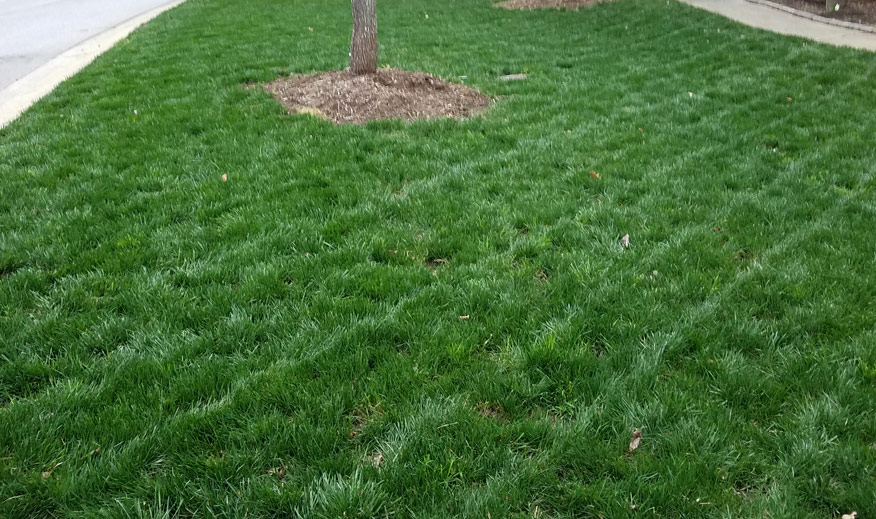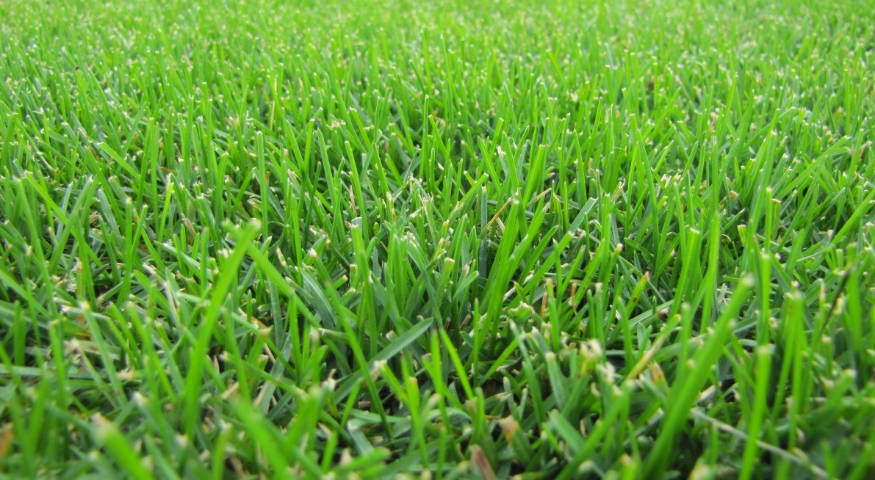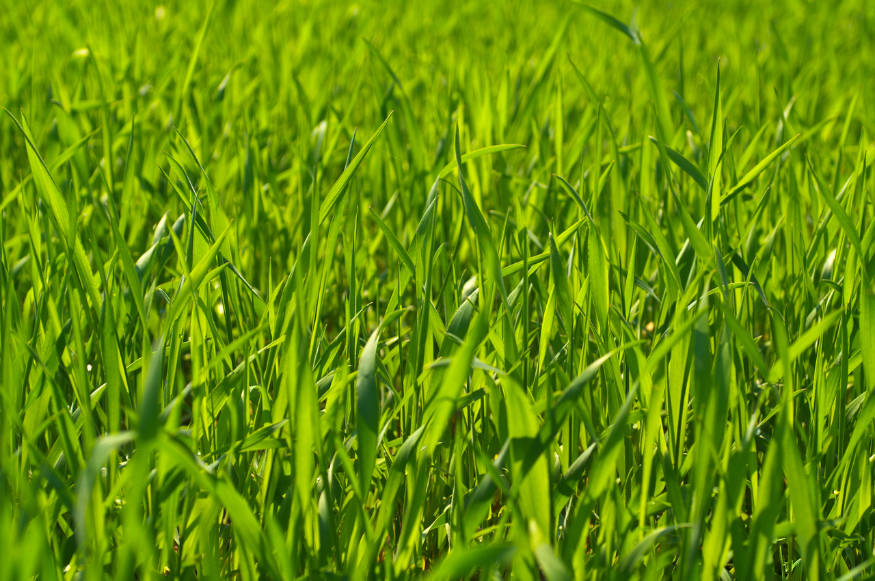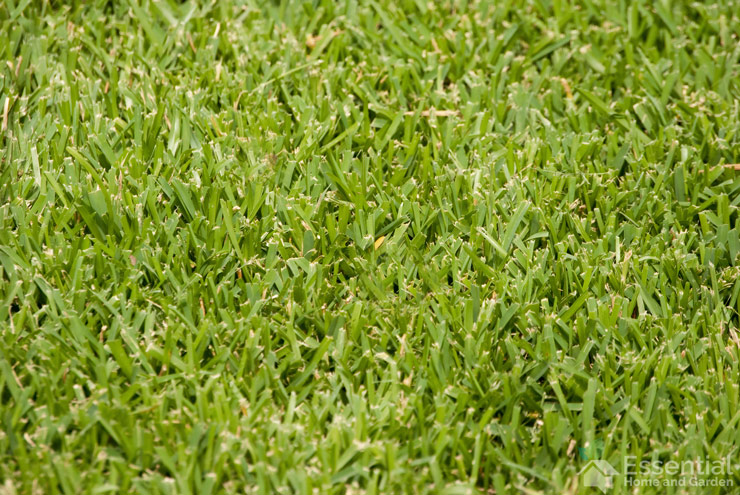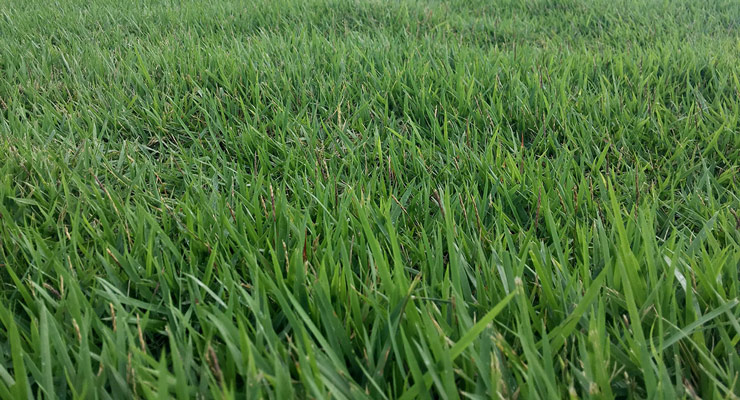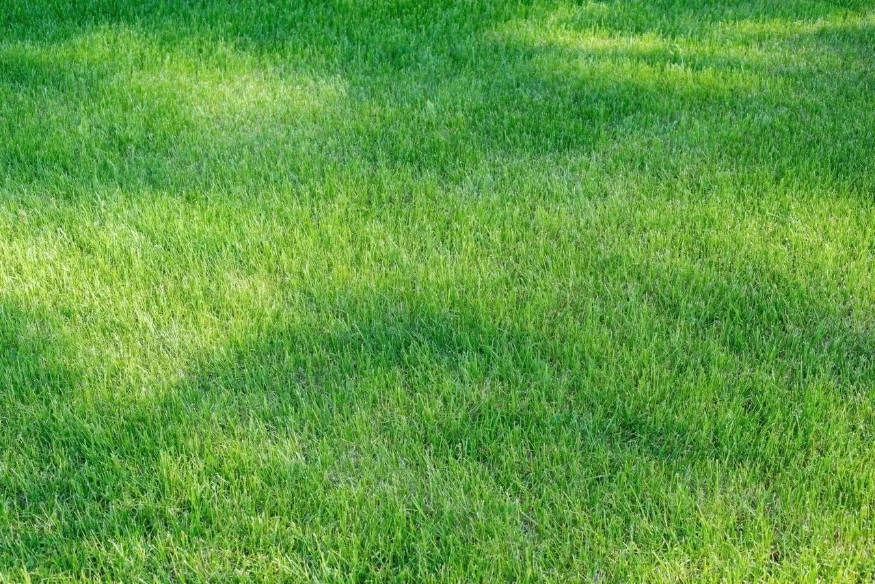Everyone wants a beautifully thick, green, and uniform lawn. But, not every property makes it easy to grow and maintain grass.
Trees, plants, and other obstacles can cast a shadow over parts of your lawn, limiting the sunlight that your grass needs to survive. And, while simple maintenance like trimming branches and plants can help create a more positive growing environment, you can’t always clear every obstacle.
Instead, choose the best grass for shade so that your lawn can stay resilient when it receives limited sunlight.
Why Shade Stops Grass Growing
Plants like grass require direct sunlight to undergo photosynthesis.
Photosynthesis is the process where sunlight is used to create plant food and oxygen from water and carbon dioxide, with the plant food fueling growth of the grass.
When an obstacle between the grass and sunlight creates shade, the direct sunlight that is required to sustain your grass can’t reach your lawn.
Without direct sunlight to fuel photosynthesis, the grass may begin to die or potentially stretch itself towards a more reliable source of sunlight over time. This can cause thin, weak, and discolored grass that is struggling to survive – the opposite of what you want from your lawn.
Before You Sow – Can You Fix the Problem?
While it may be tempting to rip up all the trees, plants, and grass on your lawn so you can start fresh in ideal conditions, it’s not feasible. In some cases, you may be able to remedy the causes of weak grass due to shade.
Remove or Limit Obstacles
Lawns are very rarely simply grass. Most properties have trees, shrubs, plants, or other foliage throughout the yard that can be a cause of limited sunlight. You may even have a pool, playset, car, or something else sitting on your grass that is blocking direct sunlight.
If you want to give your grass the best chance of thriving, it is best to remove any obstacles that can cause shade. You should regularly trim leaves and plants that hang over your grass to allow more sunlight to pass through. You’ll also want to remove or move other obstacles that are on your lawn so that they do not cast shade on the same area constantly.
For example, storing your kiddie pool in the shed or placing it in a different spot in your yard each time can lower the odds of it affecting photosynthesis.
Balance Your Soil
When your lawn isn’t receiving all of the nutrients and resources it needs to grow, it can cause havoc in your soil.
Improper sunlight can lead to drainage problems which can drown the existing seeds or encourage the growth of weeds or moss. A lack of resources can also cause the roots of your grass to grow more shallow and fight over available sunlight, leading to a thinner lawn.
To address this, consider testing your soil and then using additives to ensure the pH and nutrient levels are right for your grass. You can also improve irrigation to limit the accumulation of excess water.
Keep Grass Longer
You don’t want your lawn to become unruly, but keeping grass longer can actually help when there isn’t as much sunlight available. This is especially true when your shade problems are caused by the position of the sun in the sky.
Longer grass blades provide more surface area for each piece of grass to absorb the sunlight it needs. When the position of the sun affects the amount of time your lawn gets in the sun, making the most of the direct sunlight time can help to sustain your grass health.
Consider An Expert
If you don’t have the time or the inclination to solve the problem yourself, then it might be time to get an expert in for some advice.
Fill out the form below for a free quote from a local contractor, otherwise keep reading!
Cool Season or Warm Season Grass?
In general, grass types are separated into two categories: cool season and warm season grass.
Cool season grasses prefer milder conditions that fall between 60°F to 75°F, or 15.5° to 24°C. They require more water to grow and are not exceptionally drought-resistant like their warmer alternatives. However, they often grow better in shade because they are used to cooler, wetter, and less sunny conditions. You often find these grasses in the northern half of the United States where weather conditions are cooler year-round.
Warm season grasses prefer the higher end of the thermometer, excelling when the temperature sits between 80°F-95°F (27-35°C). They offer a better heat resistance and can more efficiently use water, keeping them alive in harsh conditions. But, as they are used to lots of direct sunlight and less water, they are less likely to excel (but can still grow) in shady conditions. You’ll find warm season grasses in the southern United States.
Best Cool Season Grasses for Shade
Fescue
Fescue, including fine and tall fescue varieties, is a relatively resilient cool season grass. It is efficient thanks to deep roots, so it only needs around 4 hours of direct sunlight to grow. It also has a better drought tolerance than many similar grasses which means it can be used in more locations, but it cannot stand up to immense heat.
Pros
- Requires minimum 4 hours of sunlight
- Better heat tolerance than many cool season grasses
- Can easily be used in a seed blend
- Can grow in dappled or filtered sunlight conditions
Cons
- Not ideal for hotter climates
Bluegrass
Rough bluegrass is a commonly used grass type because it has a higher tolerance for cool conditions and can grow well in excess moisture that may accumulate in shade. However, this means it cannot handle hotter climates.
Like fescue, it can also survive on just 4 hours of sun per day. This means that if your shade problem is based on the sun’s position, you can make the most of that time with bluegrass.
Pros
- Thrives in wet conditions
- Requires minimum 4 hours of sunlight
- Can grow in dappled or filtered sunlight conditions
Cons
- Requires cool and wet conditions
Ryegrass
Ryegrass in general is not the most hardy grass type, but perennial ryegrass can be used in shady areas. It does best when the sunlight it receives is direct rather than filtered or dappled, so it is best for lawns with sporadic amounts of direct sunlight. It has a mild moisture tolerance and can exist in mild temperatures, but it struggles when temperatures rise.
Pros
- Requires 4-5 hours of sunlight
- Tolerates mild temperatures and moisture levels
Cons
- Not ideal for grass blends due to aggressive growth
- Requires direct sunlight
Best Warm Season Grasses for Shade
St. Augustine
St. Augustine grass is a coarse, hardy grass that can grow in unideal conditions. The shade-resistant types that you should aim for are palmetto and seville seeds. They have a high heat and drought resistance, but also require only 4-5 hours of sunlight to sustain them. It excels as an option for lawns with direct and dappled light conditions because it can remain uniform even in different sunlight levels.
Pros
- Can grow in milder and hot temperatures
- Requires minimum 4 hours of sunlight
Cons
- Not ideal for moist areas
Zoysia
A fine-blade Zoysia grass like Geo Zoysia or Zoysia Neon is a viable warm grass due to its lesser sunlight requirements. Zoysia varieties can grow with just 3-4 hours of direct sunlight and grow a thick lawn, so they can present a healthy lawn even in subpar conditions. They excel in situations where direct sunlight can shine on them for a few hours, allowing them to absorb enough sun throughout the day.
Pros
- Requires only 3-4 hours of direct sunlight to grow
- Grows thick and green
- Drought-resistant
Cons
- Sunlight must be direct
- Not ideal for extreme heat
Centipede
Centipede grass is a low-maintenance warm season grass that can be a hardy shade-resistant option to consider. It can grow in subpar soil conditions, requiring less nutrients than other options and can also grow in partial sunlight. It also excels when there is an abundance of water due to a shallow root system, allowing it to thrive in moist shaded areas.
Pros
- Less sensitive to soil imbalance
- Thrives in wetter conditions
- High heat tolerance
Cons
- Grows slowly
- Struggles in cooler climates
Consider a Grass Blend
One way to improve your chances of maintaining a healthy and beautiful lawn in spite of shade is with a grass blend. This combination of different grass types adds a backup plan to your lawn in the case that one seed fails to thrive. With the right combination of grasses, you can maintain a healthy lawn in a variety of conditions caused by shade.
For example, a blend of bluegrass and fescue grass can better stand up against moist conditions that shade produces due to the bluegrass while thriving in the sun because of fescue’s higher heat tolerance. Alternatively, a combination of St. Augustine grass and Zoysia grass benefits from a higher heat tolerance and lesser sunlight requirements than either individually.
If All Else Fails…
When you simply cannot get enough sunlight to sustain grass in your yard, you have another option. Instead of grass, other plants can be used to fill in the gaps and maintain your yard’s curb appeal. Depending on the location of the shade, you have a variety of different options to plant.
Ground covers like lilyturf can be used to fill in gaps in your lawn. These dense-leafed plants require minimal water or sunlight to grow and can cover large areas if required. Ferns can also be placed in shady areas without a problem and can add a verticality to your lawn. If you want to add color, periwinkle plants have blue, purple, and white flowers that can brighten your lawn without the need for much sunlight.
Conclusion
For your lawn, the best grass for shade depends on your location and specific sunlight restrictions.
Certain options like fescue are versatile enough to be used in cool season climates and milder warm season climates while bluegrass is ideal for wetter climates. For hotter climates, St. Augustine grass or Zoysia grass may be better depending on whether you receive direct or dappled sunlight.
A grass blend can help to cover for the shortcomings of any grass type, helping to keep your lawn looking good even if one grass doesn’t thrive in your conditions. Just be sure that the requirements for the 2 seeds are similar enough that they can grow alongside each other.
